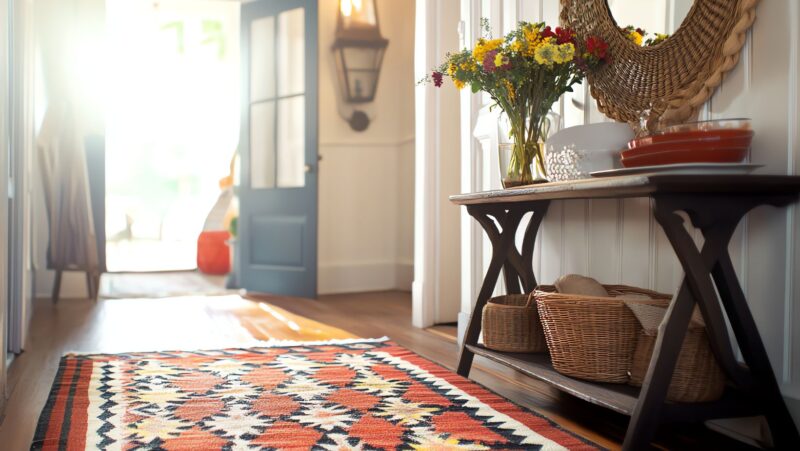As we continue to adapt to changing lifestyles and technological advancements, the way we design our homes is evolving. More than ever, homeowners are looking beyond aesthetic trends and considering how their homes can stand the test of time physically, functionally, and financially. Future-proofing your home means building with longevity, flexibility, and practicality in mind. At the heart of this approach are two key concepts: structural integrity (“strong bones”) and flexible, uncluttered layouts (“open plans”). Together, they form the blueprint for homes that are not only beautiful but resilient and adaptable.
Table of Contents
ToggleThe Foundation of Longevity: Why Structural Integrity Matters
It’s easy to get swept up in countertop finishes and lighting fixtures, but the longevity of any home starts with what lies beneath the surface, its structure. A home with “strong bones” begins with a solid foundation, reinforced framing, and durable roofing. These elements are the hidden heroes of a home’s lifespan, shielding it from environmental stressors like shifting soil, moisture intrusion, and extreme weather.
Unfortunately, many modern builds prioritize speed and low costs, often cutting corners on structural essentials. This results in costly repairs down the line and lowers a home’s resale value. Investing in structural integrity from the beginning is not just about avoiding future issues; it’s about ensuring safety and stability for decades.
If your current home is already showing signs of wear, like cracks in the foundation or uneven floors, it might be time to call in professionals. North Rock Consulting offers foundation repair manitoba homeowners can trust to reinforce their home’s strength and value. With the right team, structural weaknesses can be addressed before they become major problems.
Furthermore, building or renovating with future climate resilience in mind, such as using weather-resistant materials or advanced insulation, can reduce long-term energy costs and improve your home’s durability in unpredictable conditions.
Open Floor Plans: The Design Choice That Grows With You
Open floor plans are more than just a modern design trend; they’re a practical solution for the way we live today and tomorrow. Families grow, jobs change, and needs evolve. Open layouts provide the flexibility to accommodate life’s transitions without requiring major renovations.
An open floor plan enhances natural light and air flow, making spaces feel larger and more inviting. But beyond aesthetics, these layouts can be easily reconfigured to suit new purposes. A dining area might later serve as a home office, or a spacious living room might be sectioned into zones for work, play, and rest.
One often overlooked benefit of open design is the ease of maintaining a clear, organized space. Clutter not only disrupts the visual appeal but also reduces the functionality of your living area. To keep your open space working for you, periodic decluttering and junk removal are essential. You can learn more about junk removal at Prairie Containers, a service that helps homeowners keep their environments tidy and adaptable, especially during renovations or seasonal resets.
Open plans also pair well with flexible elements like movable walls, modular furniture, and sliding partitions, allowing you to strike a balance between openness and privacy as needed.
Smart Design Meets Smart Living: Integrating Technology for the Long Haul
Future-proofing isn’t just about bricks and beams; it also involves integrating modern technology into the structure of your home. Smart design means thinking ahead: building with systems that improve energy efficiency, comfort, and security.
Consider smart thermostats, lighting that adjusts to natural rhythms, or sensors that detect water leaks or foundation movement. These systems don’t just offer convenience; they extend the life and safety of your home.
When incorporated thoughtfully into your home’s design (rather than added as afterthoughts), these technologies create seamless living environments that adapt to changing needs and conserve resources over time.
Minimalist Aesthetic, Maximal Function: Clear Spaces That Age Well
The minimalist design approach isn’t about starkness or austerity; it’s about prioritizing function and clarity. Clear, open spaces make daily life easier, from cleaning to moving furniture to creating space for new family members or hobbies.
Designing with built-in storage, multi-use furniture, and clean lines ensures your home remains timeless rather than trend-driven. Plus, less clutter means fewer tripping hazards and reduced mental fatigue, especially important for aging homeowners or families with young children.
Minimalist spaces are also easier to update over time. Neutral palettes, open layouts, and streamlined fixtures allow for simple modifications as your lifestyle evolves, reducing the need for frequent overhauls.
Flexibility is the Future: Designing Spaces That Evolve
Homes are no longer one-dimensional; they need to do more. A room that’s just a guest bedroom today could be a nursery, home gym, or craft room tomorrow. Designing for flexibility means anticipating how your needs might shift and creating a layout that can keep up.
This includes using durable but versatile finishes, opting for multi-purpose rooms, and creating convertible spaces. Consider a basement that can transform into a rental suite or an attic that doubles as a studio.
Flexible homes are not only more comfortable, they’re also more marketable. Buyers are increasingly looking for spaces that can grow with them, rather than lock them into one way of living.
Conclusion: Building Today with Tomorrow in Mind
In a world that’s always changing, a future-proof home is one of the wisest investments you can make. By prioritizing strong structural integrity and open, adaptable layouts, you create a living space that endures both physically and functionally.
Whether you’re building from the ground up or renovating a decades-old structure, these principles will guide you toward a home that remains resilient, valuable, and deeply livable. And as you plan your next steps, remember: your home should work for you today and grow with you tomorrow.






